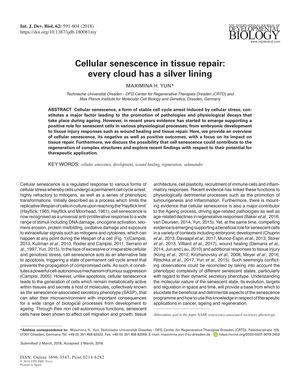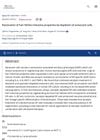Cellular Senescence in Tissue Repair: Every Cloud Has a Silver Lining
January 2018
in “
The International Journal of Developmental Biology
”

TLDR Cell aging can be both good and bad for tissue repair.
The document from January 1, 2018, explores the complex role of cellular senescence in tissue repair, regeneration, and development, as well as its implications for aging and disease. Cellular senescence is characterized by a stable cell cycle arrest and the secretion of various molecules known as the senescence-associated secretory phenotype (SASP), which can have both beneficial and detrimental effects on the surrounding tissue. While senescence contributes to age-related pathologies and declines in regenerative responses, it also plays a positive role in embryonic development, wound healing, and limiting fibrosis. The paper discusses the potential for therapeutic applications that could reconcile the beneficial and detrimental aspects of senescence, such as senolytics, which selectively eliminate senescent cells to prevent or delay tissue dysfunction. It also highlights the importance of understanding the specific context of senescence to determine its physiological impact, as transient senescent cells can aid in tissue repair, while persistent ones can contribute to chronic conditions and tissue degeneration. Further research is needed to fully understand the mechanisms and implications of senescence in tissue repair and regeneration.


